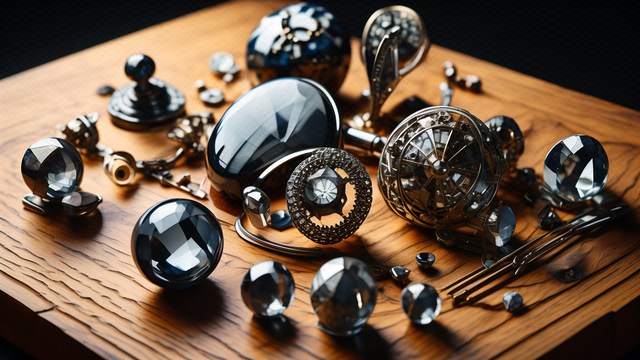
Introduction
Jewelry has held a cherished place in human culture for centuries. From ancient civilizations to modern fashion runways, the significance of jewelry transcends mere adornment. It represents personal expression, cultural heritage, and even emotional milestones. In this article, we will explore the world of jewelry, its various forms, and tips for choosing the perfect piece for yourself or a loved one.
The Significance of Jewelry
Jewelry serves many purposes. It can be a status symbol, a personal statement, or a treasured heirloom. Across cultures, jewelry is often used to mark important life events, such as weddings, anniversaries, and births. Many people also wear jewelry for its aesthetic value, using it to enhance their outfits or express their individuality.
Popular Types of Jewelry
- Necklaces: From simple chains to elaborate pendants, necklaces can make a significant statement. They come in various lengths, styles, and materials, allowing wearers to find the perfect match for any occasion.
- Earrings: Whether it's classic studs, elegant hoops, or flashy chandeliers, earrings add charm and character to any look. They can be bold or understated, making them versatile accessories.
- Bracelets: These adornments can range from delicate bangles to chunky cuffs. Bracelets can be worn alone or stacked for a layered effect, allowing for personal creativity in fashion.
- Rings: Often associated with romance and commitment, rings can symbolize many things, from love to friendship. The variety of styles, including engagement rings, bands, and fashion rings, means there’s something for everyone.
- Brooches: Although less common in contemporary fashion, brooches offer a unique way to showcase individuality. They can be used to accessorize clothing, hats, or bags.
Choosing the Right Jewelry
When selecting jewelry, consider the following factors to ensure you choose the right piece:
- Personal Style: Think about the recipient’s personal taste. Do they prefer classic, vintage, or modern styles? This will help guide your selection.
- Occasion: The purpose of the jewelry can also dictate your choice. Is it for everyday wear, a special occasion, or a gift? Different occasions call for different styles.
- Material: Consider the materials used in the jewelry. Gold, silver, and platinum offer different aesthetics and price points. Additionally, some individuals may have metal sensitivities, so be mindful of this when selecting items.
- Quality: Look for pieces made from high-quality materials. Established jewelers often provide certification for diamonds and gemstones, reassuring you of their authenticity and value.
- Trend vs. Timelessness: While it’s tempting to choose trendy pieces, think about longevity. A classic piece often withstands the test of time and remains fashionable for years.
Caring for Your Jewelry
To ensure your jewelry remains beautiful over time, follow these care tips:
- Store Properly: Keep jewelry in a dark, dry place, preferably in a soft pouch or a jewelry box to avoid scratches.
- Clean Regularly: Use appropriate cleaning methods for different materials to maintain their luster. Mild soap and water can work wonders for many types.
- Remove Before Activities: Take off jewelry before engaging in activities like exercising, swimming, or cleaning to prevent damage.
Conclusion
Jewelry is more than just a decorative accessory; it can hold sentimental value and tell a story. Understanding the different types of jewelry, how to choose the right pieces, and how to care for them will enhance your appreciation of this timeless art form. Whether you're purchasing for yourself or as a thoughtful gift, the right piece of jewelry can bring joy and elegance to any occasion.
AD
article by 52ctf is licensed under CC BY-NC-ND 4.0